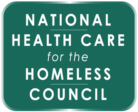End-of-Life Care
Webinars
Adapted Clinical Guidelines
Adapting Your Practice: Recommendations for End-of-Life Care for People Experiencing Homelessness | 2018
This document is part of the network’s series of practice adaptations developed by clinicians working in HCH projects.
In Focus: A Quarterly Research Review
Advance Care Planning for Individuals Experiencing Homelessness | 2016
By 2050, an estimated 95,000 older adults will be without homes, and they will confront high disease and mortality rates. Advance care planning (ACP) can play a critical role for this population in preventing unnecessary suffering and supporting individuals’ preferences for palliative and end-of-life care. This literature review examines that subject, shedding light on current aging, disease, and mortality trends of people without homes, exploring their concerns about death and preferences for advanced care, and noting implications for policy and practice to better meet the needs of individuals experiencing homelessness.
Healing Hands Issues
Patient-Centered Care: Case Studies on End of Life | 2018
People without homes experience complex health needs that become increasingly difficult to manage when diagnosed with terminal illnesses. Caregivers must implement patient-centered palliative care methods and strategies that ensure the patient is at the center of the treatment process and are sensitive to relieving suffering and improving quality of life. This issue of Healing Hands presents five case studies that highlight issues and challenges that clinicians may face in providing end of life care to this population.
HCH Clinicians Can Help Homeless People Die with Dignity | 2004
Death is ever present among homeless people and the providers who treat them. People who are homeless may die unexpectedly—often violently—or they may be seriously ill but not have access to sophisticated hospice and palliative care programs. However, some innovative programs provide compassionate end-of-life care to homeless and other underserved people, and there are some simple things that HCH providers can do to help their clients think about their preferences for end-of-life treatment. These and other topics related to end-of-life care are explored in the articles included in this issue of Healing Hands.
